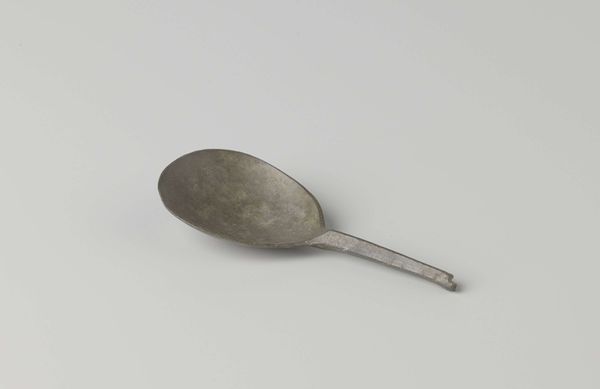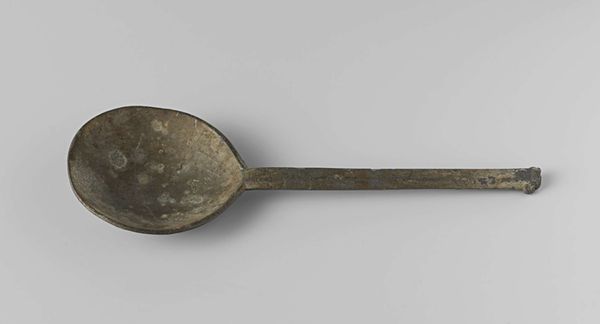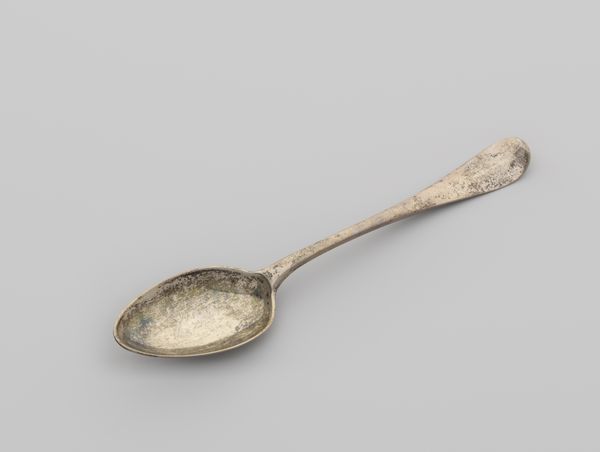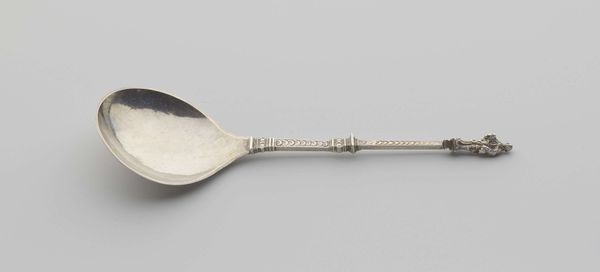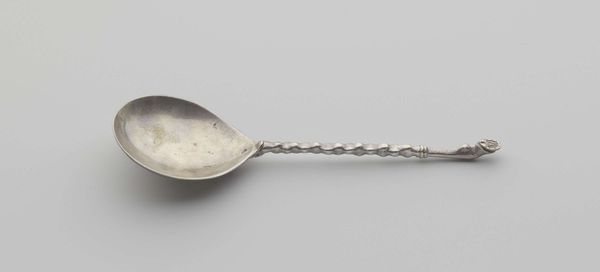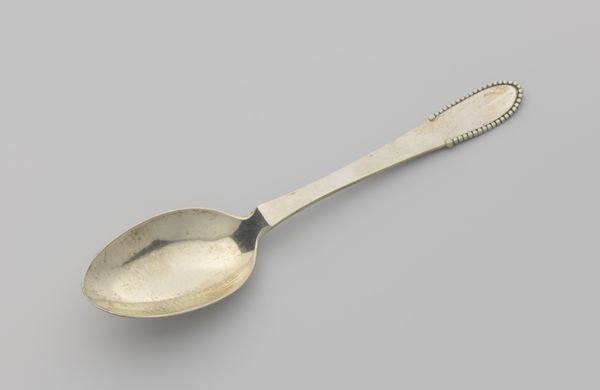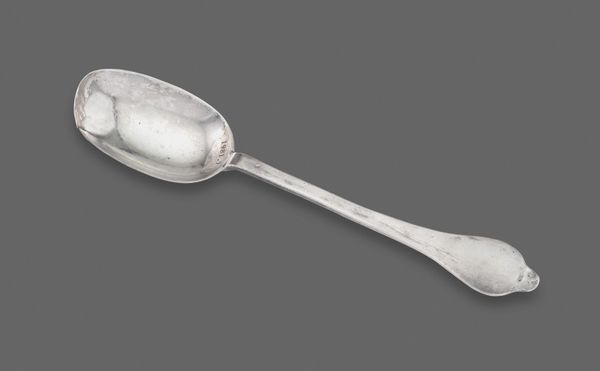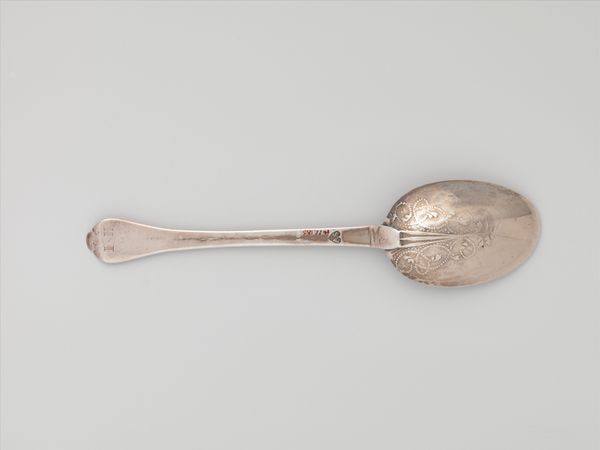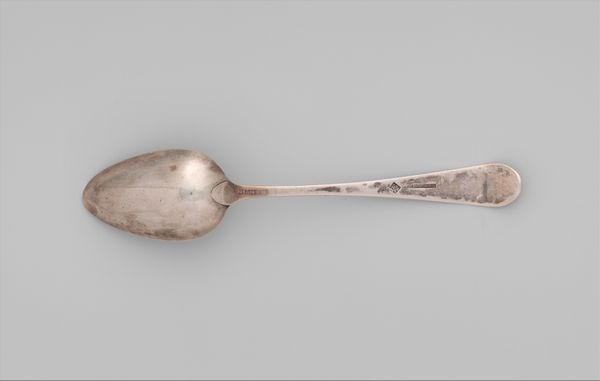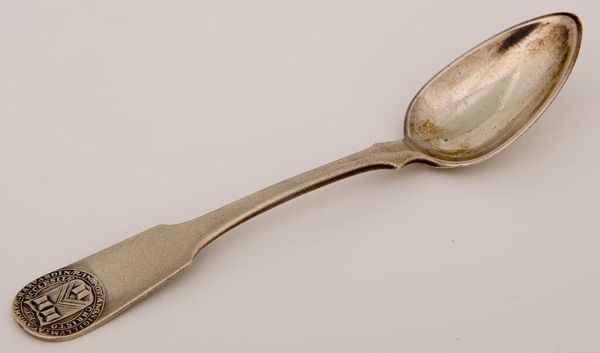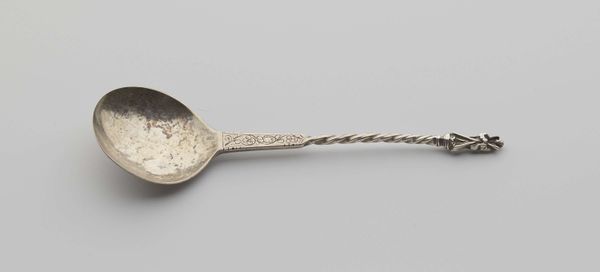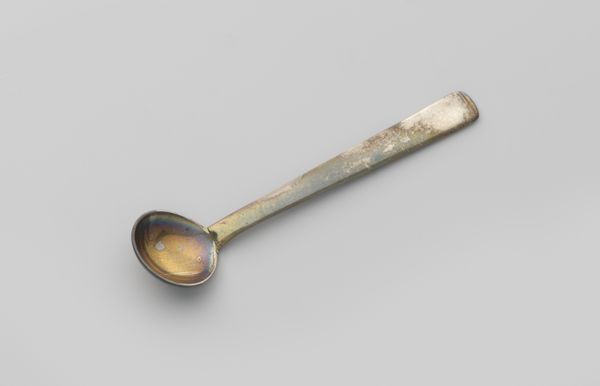
Lepel met ovale bak en restant van een rechte steel met een ruitvormige doorsnede c. 1590 - 1596
0:00
0:00
metal
#
dutch-golden-age
#
metal
Dimensions: length 11.5 cm, length 5.1 cm, length 6.6 cm, width 5.6 cm, height 2.1 cm
Copyright: Rijks Museum: Open Domain
Curator: Here at the Rijksmuseum we have an artifact that speaks volumes about daily life in the Dutch Golden Age. This is a spoon—it's formally called "Lepel met ovale bak en restant van een rechte steel met een ruitvormige doorsnede" dating from about 1590 to 1596. It’s crafted from metal, though its exact composition isn't known. What are your first thoughts? Editor: Immediately, I’m struck by the humbleness of it. There’s an austerity, a starkness in its design and the apparent wear that evokes a sense of lived experience. Curator: Precisely! These utilitarian objects are surprisingly telling. We know relatively little about its creator, which speaks to the status of craftspeople in the period. They weren't considered "artists" in the same vein as painters or sculptors. However, this spoon would have been a significant object in someone’s life. Editor: You're right. It embodies the socio-economic realities of the time. The average person's access to metal goods, the craftsmanship... it all speaks to disparities in wealth and privilege. One imagines the hands that held it, the mouths it fed, and then one asks who made the spoon and what was their experience? Were they exploited? Curator: Absolutely. Domestic objects reflect societal structure. While many Dutch Golden Age paintings glorify wealth and prosperity, this spoon presents a contrasting narrative of labor. It's tempting to view history through the lives of the wealthy elite, but items such as this can teach us about the everyday lives of regular people and the networks they inhabited. It might even offer insights into Dutch trading routes if the precise metal it contains could be determined. Editor: And I wonder how something as seemingly trivial as this survives when so many grander items have been lost. Perhaps the relative durability of metal contributed to its longevity. But I also see something precious in its endurance – a testament to both use and resilience. Curator: Well said! These understated objects allow us to rethink what we value. To consider them as social and cultural documents. Editor: Ultimately, isn't it about human connection? The spoon, though simple, provides an intimate portal into a past we can begin to understand, interpret, and critique, thus offering a nuanced way of engaging with a shared, and very complex, history.
Comments
No comments
Be the first to comment and join the conversation on the ultimate creative platform.
